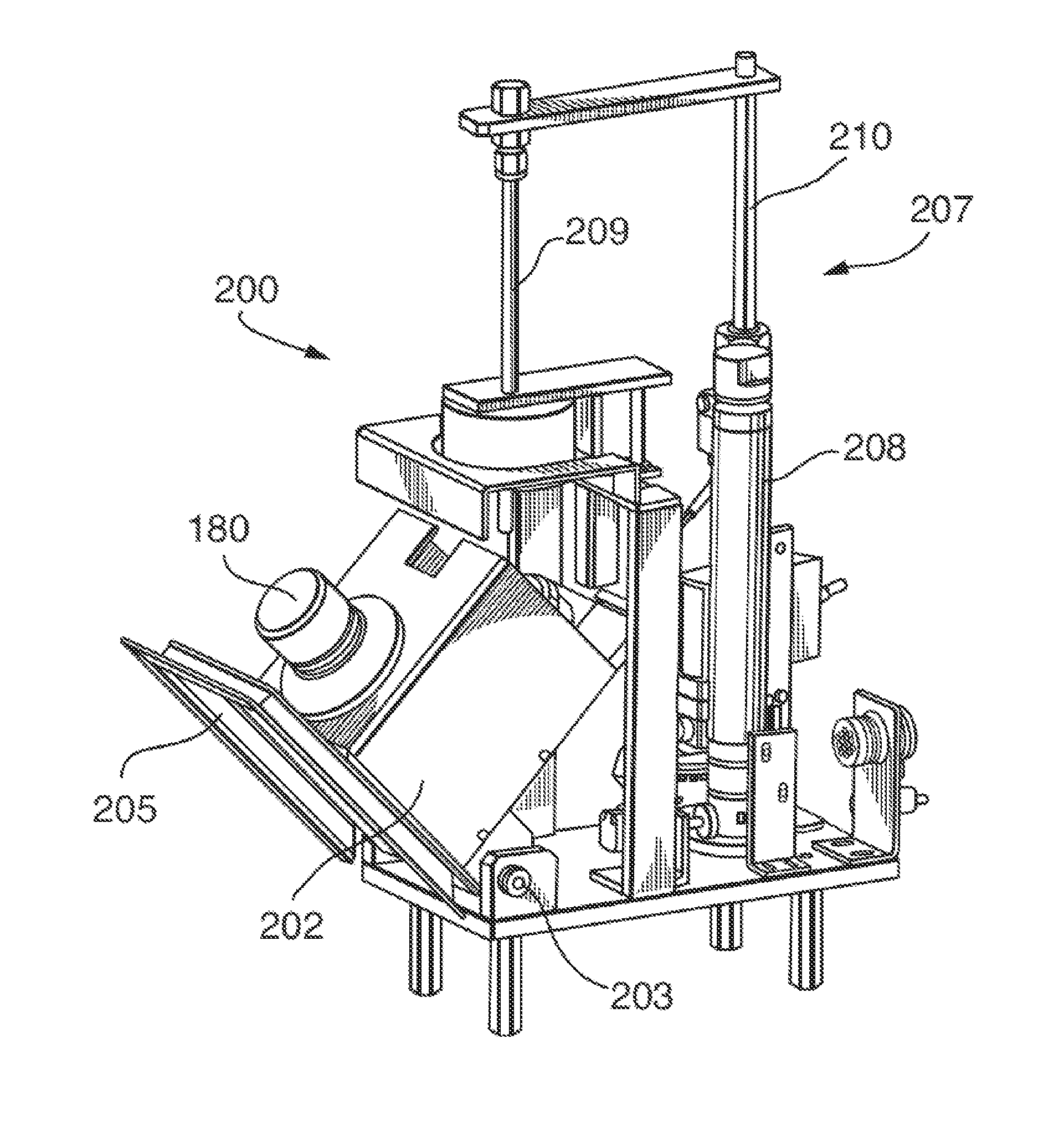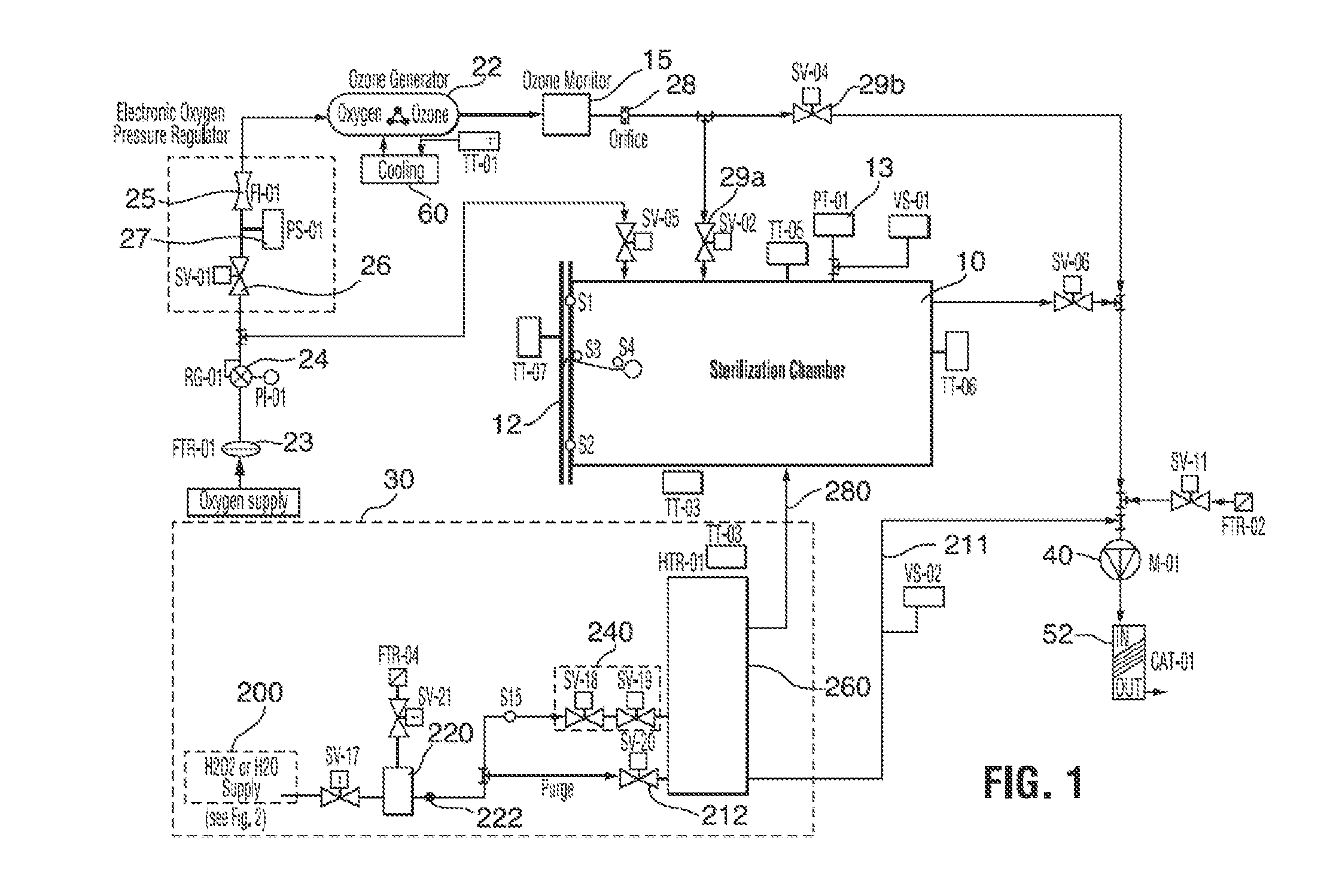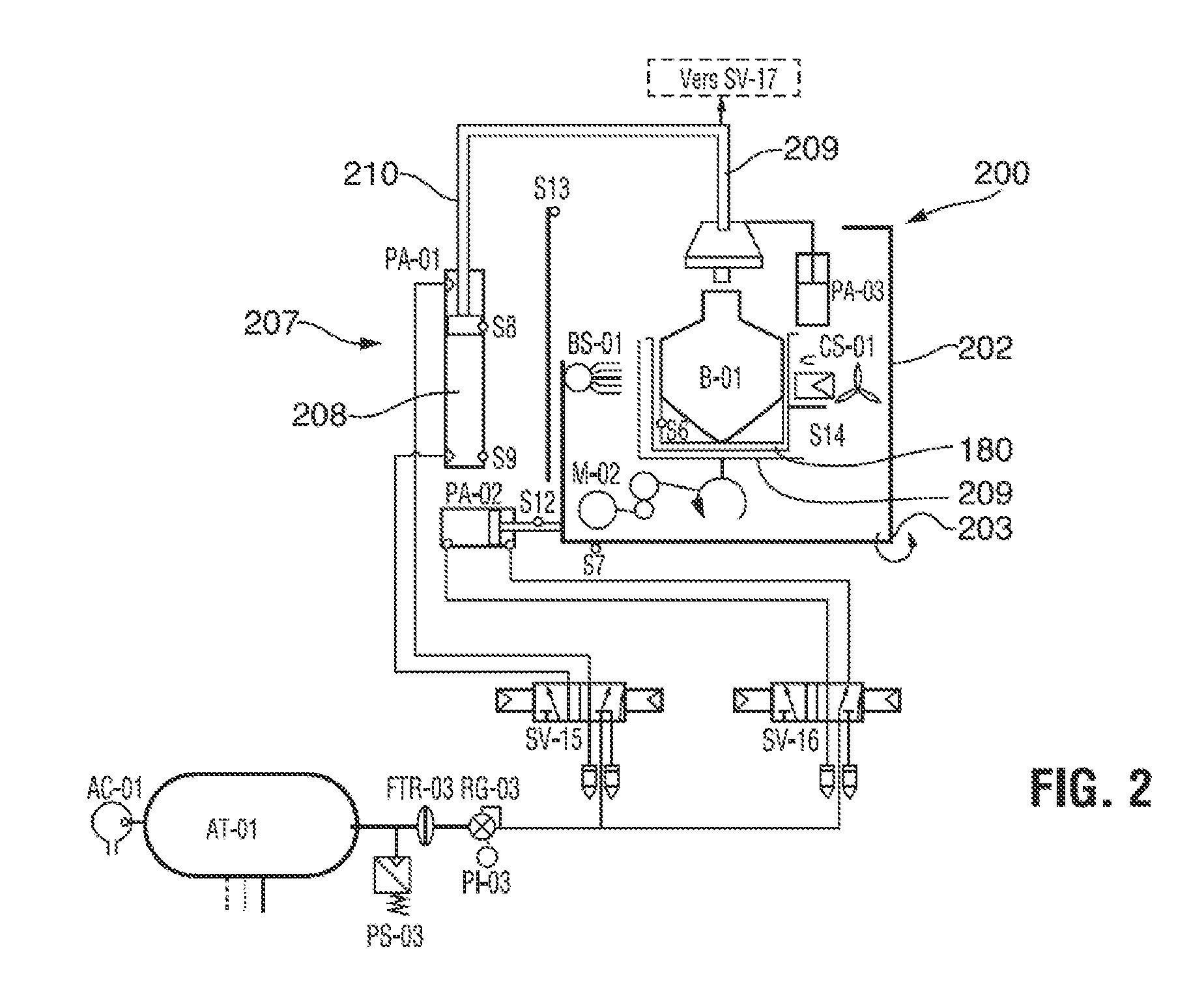Sterilization method and apparatus
a technology of sterilization method and apparatus, applied in the direction of water installations, disinfection, construction, etc., can solve the problems of invariably increasing operating cost and/or sterilization cycle times, water vapor tends to condensate on articles, and sterilized interferes with sterilization action
- Summary
- Abstract
- Description
- Claims
- Application Information
AI Technical Summary
Benefits of technology
Problems solved by technology
Method used
Image
Examples
examples
[0073]The same loads were used for the three series of tests performed: ozone, oxygen and nitric oxide. The length, diameter, material and type of tubing were different for each cycle and are described in Table 3. The inoculated lumens were placed in a special load representing an average load for the three cycles.
TABLE 3Length, diameter and material of tubing for each cycle.Cycle numberDiameter (mm)Length (cm)MaterialCycle 1180TeflonCycle 2150Stainless steelCycle 31110Teflon
[0074]The lumens used to evaluate the sterile efficacy were inoculated according to protocol MCB-09-A07 rev 9. The wire method was used. The wires were inoculated with 10 μL of a G. stearothermophilus ATCC 7953 spores suspension of 1.0×106 to 2.5×106 UFC / 10 μL. The inoculated wires were left to dry overnight at normal room conditions.
[0075]Test loads were exposed to a half-cycle of each cycle. For the experiment with oxygen and nitrogen oxide, ozone was replaced by the gas to be tested. A burette was also plugge...
PUM
| Property | Measurement | Unit |
|---|---|---|
| volume | aaaaa | aaaaa |
| volume | aaaaa | aaaaa |
| volume | aaaaa | aaaaa |
Abstract
Description
Claims
Application Information
 Login to View More
Login to View More - R&D
- Intellectual Property
- Life Sciences
- Materials
- Tech Scout
- Unparalleled Data Quality
- Higher Quality Content
- 60% Fewer Hallucinations
Browse by: Latest US Patents, China's latest patents, Technical Efficacy Thesaurus, Application Domain, Technology Topic, Popular Technical Reports.
© 2025 PatSnap. All rights reserved.Legal|Privacy policy|Modern Slavery Act Transparency Statement|Sitemap|About US| Contact US: help@patsnap.com



